#AgileMethodologies
Explore tagged Tumblr posts
Text
Agile methodologies have transformed the approach to project management. Initially introduced as a response to the rigid and inefficient waterfall model, Agile has evolved into a collection of frameworks and practices that prioritize adaptability, collaboration, and continuous improvement.
This blog review explores the evolution of Agile methodologies, from their early beginnings to modern-day implementations. We will discuss their origins, key milestones, different frameworks, and how Agile continues to shape industries beyond software development.
#AgileMethodologies#Scrum#Kanban#ExtremeProgramming#LeanAgile#ProjectManagement#AgileTransformation#SoftwareDevelopment#AgileLeadership#ScaledAgile#BusinessAgility#AgileCoaching#ContinuousImprovement#DigitalTransformation#DevOps
0 notes
Text

ICYMI: Performance Improvement Consulting https://kamyarshah.com/performance-improvement-consulting/
0 notes
Text
🚀 Elevate Your ITSM Expertise with Certified Agile Process Owner (CAPO) Training!
Upgrade your skills with Upgrade My Skill's Certified Agile Process Owner (CAPO) course and master the art of managing and improving IT Service Management (ITSM) processes using Agile methodologies.
🔑 What you'll learn: ✅ Agile & Scrum practices tailored for process owners ✅ Managing stakeholder requirements and aligning processes with business goals ✅ Streamlining workflows using Agile principles for maximum efficiency
💡 Ideal for professionals in IT Service Management, project management, software development, and business operations, this certification equips you to:
Drive process improvements Increase stakeholder satisfaction Adapt processes to dynamic business demands Prepare for the CAPO exam and become a leader in Agile process management, delivering measurable value and impact to your organization.
📈 Invest in your growth and future success. Enroll now! https://www.upgrademyskill.com/certified-agile-process-owner-certification-training
1 note
·
View note
Text
PMI-ACP: Your Path to Agile Certified Practitioner
Project management is a constantly changing field. The ability to adapt is essential for professionals who want to advance in their career. The pmi-acp is one of the most sought after certifications for agile project management. The PMI-ACP is an indicator of an individual's knowledge and expertise with agile principles and practices. This certification is for people who are part of agile teams, or whose organization has adopted agile practices.
Understanding the PMI ACP Certification
The pmi-acp certification is an internationally recognized credential which validates a person's knowledge and skill in agile methodologies. The certification covers a variety of agile methodologies, such as Scrum, Kanban and Lean. It also includes extreme programming (XP) and test-driven design (TDD). This certification allows professionals to demonstrate their ability in working agile environments and leading agile projects.
The benefits of PMI-ACP certification
A PMI-ACP Certification can enhance your career prospects. With agile practices being adopted by more industries, a PMI certification will improve your chances of landing a job. Many employers prefer candidates with a proven proficiency in agile methods.
Versatility and Flexibility - The PMI ACP certification is a flexible credential that covers a variety of agile methodologies. You will be able to use various agile practices depending on your project's needs.
Global Recognition - The PMI-ACP certification is recognized globally, giving you a competitive advantage on the global job market. This certification demonstrates your commitment towards continuous learning and professional growth.
Improved Project Performance - Agile practices are based on iterative, incremental approaches to deliver value to customers. Implementing these practices will improve project performance and reduce risk, while increasing customer satisfaction.
Who should pursue PMI-ACP certification?
The PMI ACP certification is perfect for:
Project Managers
Agile Coaches
Scrum Masters
Product Owners
Team Leaders
Software Developers
Business Analysts
Agile project managers and agile team members
The PMI-ACP certification eligibility requirements
Candidates must meet certain educational and professional criteria to be eligible for Agile Certified Practitioner Certification.
Secondary education (high school diploma or associate's degree) is required.
General Project Experience : 2,000 hours (12 month) of general project experiences within the past five years. This requirement will be waived if you have a PMP (r) or a PgMP (r) certification.
Agile Project Experience: 1 500 hours (8 months) experience in agile project teams, or agile methodologies, within the past three years. This is on top of the general project experience.
Training in Agile practices: 21 contact hours in agile practices.
Exam Details and preparation
The PMI ACP exam measures your understanding and skill in agile principles and practice. Here are some important details about the test:
Exam Format: Multiple-choice questions
Number of questions: 120
Duration: 3 Hours
Exam Content: This exam covers seven areas of agile practices including value-driven delivery and stakeholder engagement. It also includes team performance and adaptive planning.
PMI-ACP Certification Study Tips
Understand the Exam Outline: Familiarize with the seven areas of agile practices, as well as the knowledge and skills needed for each area.
Invest in PMI ACP Study Guides: Buy reputable PMI ACP study guides that cover the entire exam. Mike Griffiths' "PMI ACP Exam Prep", and Andy Crowe's "The PMI ACP Exam: How to Pass on Your First Attempt" are two popular resources.
Take Practice Exams: Practice exams can be a good way to test your knowledge and pinpoint areas where you need to improve. You can also get used to the format of the exam and its time restrictions.
Join study groups and online forums: Engaging other PMI aspirants via study groups and online forum can provide valuable insight, tips, support, and encouragement.
Attend Agile Training Courses. Enroll in courses that offer the 21 contact hours needed for eligibility. These courses provide practical experience and knowledge that will help you pass the exam.
How to Maintain Your PMI ACP Certification
It is important to keep your PMI ACP certification active by completing the CCR program. It involves earning 30 PDUs (professional development units) on agile topics every 3 years.
The conclusion
The PMI ACP certification is a great way to demonstrate your knowledge of agile practices, and improve your career prospects within the constantly evolving field of project management. This certification demonstrates your commitment to growth as a professional and your ability lead agile projects.
The Agile Certified Practitioner Certification is a great way to open up new opportunities and gain the knowledge and skills needed to thrive in an agile environment. Begin your journey to become a PMI ACP certified professional and elevate your career.
#PMIACP#PMIACPCertification#AgileCertifiedPractitioner#AgileProjectManagement#ProjectManagement#AgileMethodologies
0 notes
Text
#InnovationThroughIteration#ContinuousImprovement#IterativeProcess#CustomerFeedback#AgileMethodologies
0 notes
Text
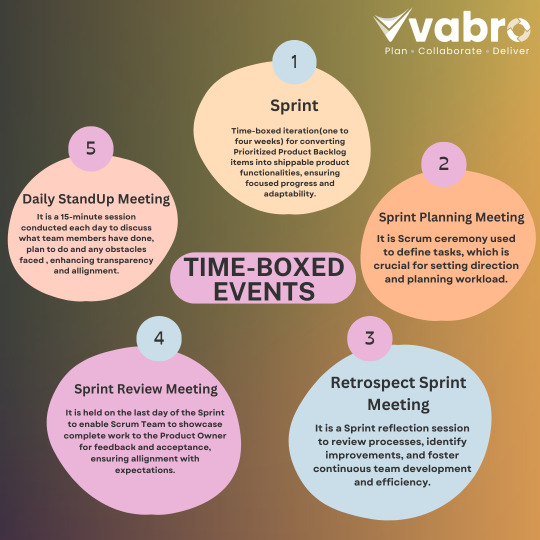
"Time-boxed activities in Scrum framework enable teams to work efficiently and effectively!\
Listed below are the various time-boxed activities in Scrum:
Sprints: fixed duration for specific goals
Daily Scrum: 15-minute daily check-ins
Sprint Review: demo and feedback in a set time
Sprint Retrospective: reflect and improve within a timebox
Visit www.vabro.com
#Vabro#Agile#ScrumFramework#TimeBoxing#AgileMethodologies#ProductivityHacks#EfficientTeams#EffectiveProjectManagement"
1 note
·
View note
Text
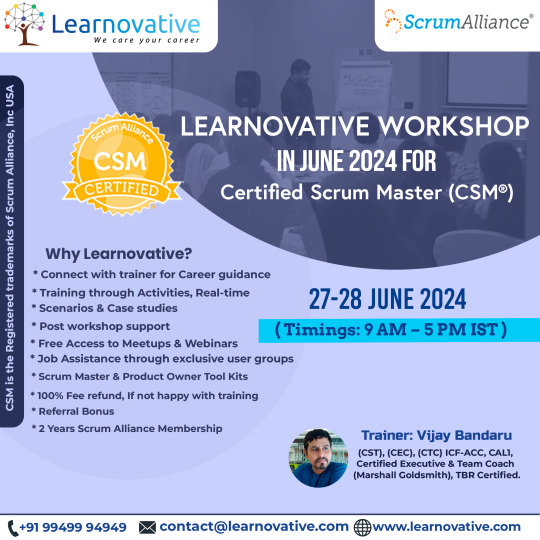
CSM Certification Live Virtual Classroom (LVC) Online | June 27-28, 2024 | Learnovative
Join Learnovative's CSM Certification Live Virtual Classroom (LVC) Online on June 27-28, 2024, with expert trainer Vijay Bandaru. This comprehensive online course is designed to enhance your Scrum Master skills through interactive learning and real-world scenarios. Achieve your certification from the comfort of your home, guided by a seasoned professional. Don't miss this opportunity to advance your career in agile methodologies—register now!
call now : 09949994949
#CSMCertification#Learnovative#ScrumMasterTraining#VijayBandaru#AgileMethodologies#VirtualClassroom#OnlineTraining#ScrumCertification#June2024#ProfessionalDevelopment#CSM#CSPO#ACSM#ACSPO#CSMtraininginHyderabad#CSMtrainingcoursesinHyderabad#ScrumMastertraininginHyderabad#ScrumMastercertificationinHyderabad#CertifiedScrumMastercertificationinHyderabad#CertifiedScrumMastercertificationtraininginHyderabad#CSMcertificationinHyderabad#CertifiedScrumTrainerinHyderabad#CertifiedAgileScrumTrainerinHyderabad#CertifiedEnterpriseCoachinHyderabad#CertifiedTeamCoachforCSMinHyderabad#CertifiedTeamCoach
0 notes
Text
Future of Risk Management in Project Management
Introduction
Risk management is always an important aspect of project management, ensuring that potential challenges are identified, assessed, and mitigated before they can compromise project objectives. As we look to the future, the risk management landscape is rapidly evolving, driven by technological advances, changing business environments, and new approaches In this blog we will explore the key trends and innovations shaping the future of RMP Course.
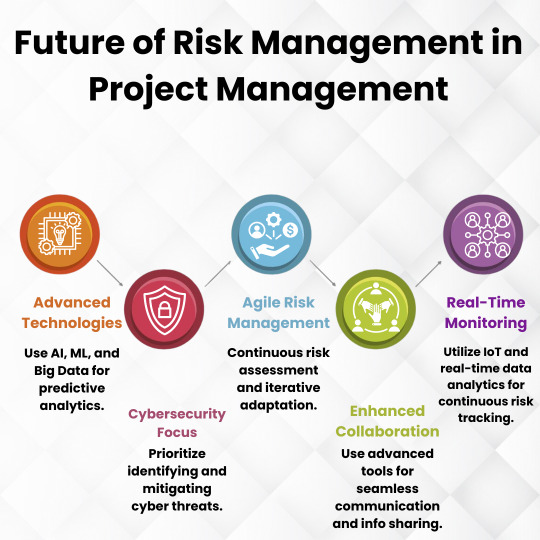
1. Integration of Advanced Technologies
One of the most important changes in risk management is the integration of advanced technologies. Artificial intelligence (AI), machine learning (ML), and big data analytics are changing project managers' identification and evaluation of risks. This technology enables predictive analytics, which can predict potential risks based on historical and current data. For example, AI algorithms can analyze vast amounts of project data delays, budget overruns, and other risks, allowing project managers to take proactive actions.
2. Real-Time Risk Monitoring and Management
The future of risk management sees a shift from continuous risk assessment to dynamic, real-time risk management. Internet of Things (IoT) devices and real-time data analytics enable project managers to monitor project data continuously. This real-time approach enables immediate detection and response to emerging risks, significantly reducing the potential impact on project results.
3. Agile Risk Management
The future of risk management sees a shift from continuous risk assessment to dynamic, real-time risk management. Internet of Things (IoT) devices and real-time data analytics enable project managers to monitor project data continuously. This real-time approach enables immediate detection and response to emerging risks, significantly reducing the potential impact on project results.
4. Increased Focus on Cybersecurity Risks
With increasing reliance on digital tools and online platforms, cybersecurity has become a key component of risk management. Future risk management strategies should prioritize identifying and mitigating cybersecurity threats to protect critical business data and ensure the integrity of digital systems.
5. Enhanced Collaboration and Communication Tools
Effective risk management depends on collaboration and easy communication among project stakeholders. The future will see a proliferation of advanced collaboration tools that facilitate better communication, information sharing, and decision-making. These tools can help align departments, ensure transparency, and enable collaborative risk management efforts.
6. Sustainability and Resilience in Risk Management
As growth and resilience have become central themes in business strategy, risk management has also evolved to incorporate these concepts. Project managers consider environmental, social, and governance (ESG) risks to ensure that projects contribute effectively to sustainable development goals and are environmentally and socially sustainable the mouth of violence.
7. Emphasis on Human Factors and Behavioral Risks
Understanding human behavior and its impact on risk is important in risk management. Future risk management strategies should address behavioral risks, such as decision bias, team dynamics, and stakeholder engagement. Training and development programs will be essential in developing a workforce with the skills to identify and manage these human factors effectively.
Conclusion
Future risk management in RMP Certification emphasizes technological innovation, real-time analytics, agility, cybersecurity, sustainable development, and human factors By embracing these advancements and continuously transforming their risk management practices, project managers can effectively navigate today’s complex projects and inspire successful results. Moving forward, the integration of these advanced risk management strategies will be essential to ensure businesses are resilient, sustainable, and successful in an ever-changing business environment.
#RiskManagement#ProjectManagement#FutureOfWork#AdvancedTechnologies#RealTimeMonitoring#AgileMethodologies
0 notes
Text
Stop, Drop, and Agile: Why Traditional Project Management Needs a Reboot
The traditional approaches, characterized by rigid structures and linear workflows, struggle to keep pace with the dynamic and unpredictable nature of contemporary project environments. This is where Agile Project Management steps in, offering a fresh perspective that emphasizes adaptability, collaboration, and iterative progress.
The Limitations of Traditional Project Management
1. Inflexibility and Rigidity
Traditional project management frameworks, such as Waterfall, rely on a sequential approach where each phase of the project must be completed before the next begins. This rigid structure leaves little room for adapting to changes or unforeseen challenges. Any deviation from the initial plan can cause significant delays and increased costs.
2. Lengthy Development Cycles
Projects managed under traditional methods often experience long development cycles, making it difficult to respond promptly to market changes or customer feedback. By the time a product or service is delivered, it may no longer align with the current market demands or customer needs.
3. Communication Gaps
Traditional project management often follows a top-down approach, where decisions are made by higher-ups and then communicated down the hierarchy. This can create communication gaps, misunderstandings, and a lack of alignment between team members, ultimately affecting project outcomes.
4. Risk of Project Failure
With rigid planning and limited flexibility, traditional project management increases the risk of project failure. Projects can easily go off-track if initial assumptions are proven wrong, leading to costly rework and missed deadlines.
The Agile Advantage
1. Adaptability and Flexibility
Agile Project Management is designed to be adaptable and flexible, allowing teams to respond quickly to changes and new information. Unlike traditional methods, Agile embraces change, viewing it as an opportunity to improve the project outcome. This flexibility helps teams to deliver more value to stakeholders, even in the face of evolving requirements.
2. Iterative Progress and Continuous Improvement
Agile methodologies, such as Scrum and Kanban, focus on iterative progress. Projects are divided into small, manageable chunks called sprints or iterations, allowing teams to deliver functional increments of the product regularly. This iterative approach facilitates continuous improvement, as teams can incorporate feedback and make necessary adjustments in real-time.
3. Enhanced Collaboration and Communication
Agile promotes a culture of collaboration and open communication among team members. Daily stand-up meetings, sprint reviews, and retrospectives ensure that everyone is on the same page and working towards a common goal. This high level of engagement and transparency fosters a stronger sense of ownership and accountability within the team.
4. Reduced Risk and Increased Success Rates
By breaking projects into smaller iterations and continuously reviewing progress, Agile significantly reduces the risk of project failure. Teams can quickly identify and address issues, pivoting when necessary to keep the project on track. This proactive approach leads to higher success rates and more predictable outcomes.
Implementing Agile: Key Practices
1. Embrace a Growth Mindset
Transitioning to Agile requires a shift in mindset. Teams and organizations must embrace a culture of continuous learning, experimentation, and improvement. Encouraging a growth mindset helps teams to be more resilient and open to change.
2. Foster Collaboration and Empower Teams
Agile thrives on collaboration and team empowerment. Encourage cross-functional teams to work together closely, leveraging each other's strengths and expertise. Empower teams to make decisions and take ownership of their work, fostering a sense of autonomy and accountability.
3. Prioritize Customer Feedback
Agile places a strong emphasis on customer satisfaction. Regularly seek feedback from customers and stakeholders to ensure that the project is aligned with their needs and expectations. Use this feedback to make informed decisions and adjustments throughout the project lifecycle.
Conclusion The shift from traditional project management to Agile is not just a trend but a necessity in today's fast-paced business environment. Project Management tool offers a more flexible, collaborative, and customer-centric approach that aligns better with the complexities and uncertainties of modern projects. By embracing Agile, organizations can improve their efficiency, reduce risks, and increase their chances of project success.
#agilemanagement#projectmanagement#agilemethodologies#scrum#kanban#teamefficiency#productivitytools#agiletransformation#leadershipinagile#projectsuccess
0 notes
Text
youtube
Unlock Agile Release Planning secrets! Learn its purpose, types, steps, and get an Excel template. Subscribe for more insights. #Agile #Scrum #ReleasePlanning
#agile#scrum#agiledevelopment#agileprojectmanagement#agilemethodologies#agile methodology#agiledevops#Youtube
0 notes
Text
The role of an Agile coach is multifaceted and vital for the successful adoption and sustainability of Agile practices. By mentoring teams, facilitating processes, promoting collaboration, and driving continuous improvement, Agile coaches help organizations navigate their Agile journey and achieve their strategic objectives.
In a world where agility is key to competitiveness, the value of an Agile coach cannot be overstated. Embrace Agile coaching, and you’ll be well on your way to fostering a more adaptive, efficient, and customer-focused organization.
#AgileCoaching#Leadership#AgileCoach#AgileMethodologies#Scrum#Kanban#Lean#ContinuousImprovement#TeamCollaboration#ChangeManagement#AgileTransformation#ProjectManagement#Mentoring#FacilitationSkills#OrganizationalAgility#CustomerSatisfaction#AgileCulture#StrategicAlignment#ProblemSolving#EffectiveCommunication
0 notes
Text

Performance Improvement Consulting https://kamyarshah.com/performance-improvement-consulting/
0 notes
Text
Mastering Agility with PRINCE2 Agile Foundation Certification
In the ever-evolving landscape of project management, the integration of Agile methodologies with traditional frameworks has become a game-changer. PRINCE2 (Projects in Controlled Environments) Agile is a powerful approach that combines the flexibility and responsiveness of Agile with the structured and risk-driven aspects of PRINCE2. For professionals looking to harness this synergy, the Prince2 Agile Foundation certification is an essential step. This certification equips individuals with the knowledge and skills to tailor their project management approach to the unique needs of their projects, teams, and organizations.
Understanding PRINCE2 Agile
Prince2 Agile is not simply a blend of two methodologies; it's a comprehensive framework that offers the best of both worlds. It provides the governance and control of PRINCE2 while embracing the collaborative and iterative nature of Agile. This makes it particularly well-suited for complex projects that require both discipline and adaptability.
The PRINCE2 Agile Foundation certification is designed to introduce practitioners to the principles, themes, and processes that make up PRINCE2, as well as the Agile concepts that complement them. It is an ideal starting point for those new to PRINCE2 or Agile, as well as for experienced project managers looking to expand their skill set.
Benefits of PRINCE2 Agile Foundation Certification
Earning the PRINCE2 Agile Foundation certification can provide a multitude of benefits for project managers and their organizations:
1. Enhanced Career Prospects: The certification is a recognized badge of expertise that can open doors to new job opportunities and career advancement.
2. Improved Project Success: Armed with the knowledge of PRINCE2 Agile, practitioners can lead projects more effectively, resulting in higher success rates and better outcomes.
3. Competitive Advantage: Organizations with certified PRINCE2 Agile practitioners can differentiate themselves in the market and attract clients looking for a blend of Agile and traditional project management expertise.
4. Flexibility and Adaptability: The certification equips individuals with the tools to adapt their approach based on the specific needs of each project, fostering a culture of continuous improvement.
5. Global Recognition: PRINCE2 Agile Foundation is a globally recognized certification, making it valuable across different industries and regions.
Eligibility and Exam Format
To pursue the PRINCE2 Agile Foundation certification, there are no prerequisites, making it accessible to a wide range of professionals. The certification is obtained by passing a single, objective examination that consists of 50 questions to be completed in 60 minutes. The pass mark is 33/50, or 66%.
Preparing for the PRINCE2 Agile Foundation Exam
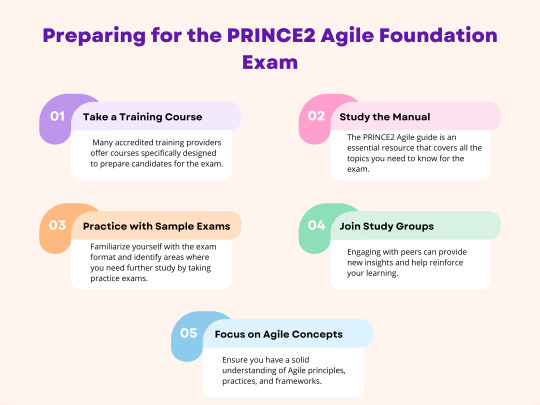
Adequate preparation is key to passing the PRINCE2 Agile Foundation exam. Here are some tips to help you get ready:
1. Take a Training Course: Many accredited training providers offer courses specifically designed to prepare candidates for the exam.
2. Study the Manual: The PRINCE2 Agile guide is an essential resource that covers all the topics you need to know for the exam.
3. Practice with Sample Exams: Familiarize yourself with the exam format and identify areas where you need further study by taking practice exams.
4. Join Study Groups: Engaging with peers can provide new insights and help reinforce your learning.
5. Focus on Agile Concepts: Ensure you have a solid understanding of Agile principles, practices, and frameworks, as they are a significant part of the certification.
The Value of PRINCE2 Agile Certification in Practice
In practical terms, PRINCE2 Agile certified professionals bring a unique set of skills to their projects. They are able to create a project environment that is both controlled and dynamic, ensuring that projects remain on track while being responsive to change. This balance is crucial in today's fast-paced business environment, where the ability to adapt quickly can mean the difference between success and failure.
Moreover, Prince2 Agile Certification promotes a common language and understanding among project teams, which can enhance collaboration and communication. It also provides a framework for continuous improvement, encouraging practitioners to reflect on their processes and outcomes to drive better performance.
Conclusion
The PRINCE2 Agile Foundation certification is a valuable asset for project managers seeking to blend Agile working practices with the discipline of PRINCE2. It offers a structured approach to managing projects that is both adaptable and rigorous, making it suitable for a wide range of project environments. By earning this certification, professionals can enhance their career prospects, improve project delivery, and contribute to organizational success in an increasingly Agile world.
#PRINCE2Agile#PRINCE2AgileFoundation#PRINCE2AgileCertification#ProjectManagement#AgileMethodologies#PRINCE2Framework
0 notes
Text
Agile Content Management Systems (CMS) are software platforms that enable organizations to create, manage, and deliver digital content in a flexible and iterative manner. These systems are designed to support the principles and practices of Agile methodologies, which emphasize collaboration, adaptability, and continuous improvement
#ContentManagement#AgileContentManagement#AgileCMS#DigitalContent#AgileMethodologies#Collaboration#ContinuousImprovement#PersonalizedContent
0 notes
Text
Agile Development Methodology for Efficient App Creation
The agile technique is an effective architect. The increasing need for quick and creative app development makes adopting Agile not only a wise decision but also a tactical need. This blog explores the nuances of the Agile Development Methodology and demonstrates how it may be used as a driving force behind productive app development.
1. Agile Foundations: A Blueprint for Flexibility and Collaboration
At the heart of Agile lies a fundamental shift from traditional linear development. It champions flexibility, collaboration, and adaptability, allowing development teams to respond swiftly to evolving requirements and market dynamics.
2. Iterative Development
Agile thrives on iterative cycles, breaking down the app creation process into manageable increments. This approach enables continuous improvement, with each iteration building upon the successes and learnings of the previous ones.
3. User-Centric Focus
Agile places users at the center of development, emphasizing the creation of features that align with user needs and expectations. Regular feedback loops ensure that the end product resonates with users, fostering seamless and intuitive experiences.
4. Cross-Functional Collaboration
Silos dissolve in Agile environments. Developers, designers, testers, and stakeholders collaborate throughout the development lifecycle. This cross-functional synergy enhances communication, minimizes delays, and accelerates decision-making.
5. Continuous Testing
Quality is not an endpoint in Agile; it's woven into the fabric of development. Continuous testing ensures that each iteration maintains high standards, identifying and rectifying issues promptly.
6. Adaptability
In the fast-evolving tech landscape, requirements are bound to change. Agile embraces change rather than resisting it. This adaptability ensures that apps remain relevant and responsive to the evolving needs of users and the market.
7. Regular Feedback Loops
Agile thrives on communication. Regular feedback loops, sprint reviews, and retrospectives ensure transparent communication among team members and stakeholders. This constant dialogue enhances understanding and aligns the team with project goals.
8. Swift Time-to-Market
Agile's efficiency is synonymous with speed. By breaking development into iterations, each delivering tangible value, Agile expedites the time-to-market, allowing apps to meet market demands swiftly and iteratively.
In the ever-accelerating landscape of app development, Agile is not just a methodology; it's a manifesto for efficient, user-centric, and innovative creation. As you embark on your app development journey, let Agile be the guiding light, shaping your path towards success.
Embrace Agile with Magnigeeks, where innovation meets methodology.
Learn more about our Agile development services at https://magnigeeks.com/ and witness the transformation of your app creation process. Agile development is not just a methodology; it's a mindset that propels your app creation process into a realm of efficiency, innovation, and continuous improvement.
Get Agile involved in your business with Magnigeeks, where methodology meets innovation. Explore our Agile development services at https://magnigeeks.com/ and experience the evolution of your app creation process.
#agiledevelopment#app development#innovationintech#agilemethodologies#magnigeeks#techinnovation#digital transformation#tech evolution
0 notes
Text
Strategic Approaches to Agile Leadership: Earning 60 PDUs for PMP Renewal
Introduction:
Mastering Agile leadership has become critical in complex ways, fostering innovation that will enable organizations to succeed in today’s rapidly evolving business environment. Agile leaders must continually refine their skills learn best practices and effectively lead teams and projects. One of the most valuable ways to do this is to obtain Professional Development Units (PDUs), especially for those with Project Management Professional (PMP) certification who want a PMP Renewal PDU In this blog post, we will discuss how 60 get the benefits story PDUs for Agile leadership. We will explore strategies, and enhance their leadership capabilities.
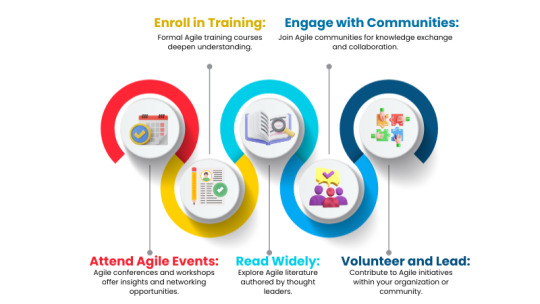
Understanding PDUs and PMP Renewal:
Before we delve into the processes, let’s clarify what PDUs are and their importance for Agile leaders, especially those with PMP certification. PDU is a measure used by the Project Management Institute (PMI) to determine the amount of time spent on project management related to professional development activities PDU obtaining and reporting is important for PMP-certified holders to maintain their certification by On the PMP renewal PDU.
Strategies for Earning 60 PDUs as an Agile Leader:
1. Attend seminars and impromptu workshops:
Accelerated meetings and workshops provide valuable opportunities to learn from industry experts, network with peers, and gain insights into emerging products and trends. Look for conferences that specifically focus on agile leadership, such as the Agile Leadership Summit, Scrum Gathering, or PMI’s Agile Certified Practitioner (PMI-ACP) conference.
2. Enroll in agile training courses:
Invest in a customized Agile training course to enhance your understanding of Agile methodologies, processes, and leadership principles. Look for courses accredited by PMI or other reputable organizations, such as Certified Scrum Master (CSM), Certified Scrum Product Owner (CSPO), or advanced SAFe (Scaled Agile Framework) certification.
3. Join active communities and events:
Interact with the Agile community online and offline and in various forums to exchange ideas, share experiences, and collaborate with fellow Agile professionals. Participating in forums like the Agile Alliance, Scrum.org, or PMI’s Agile Community of Practice can provide valuable insights and networking opportunities.
4. Read quick books:
Continue to expand your knowledge by reading books, articles, and blogs on Agile leadership, project management, and related topics. Look for books written by prominent Agile thought leaders and practitioners to stay up to date with the latest developments and best practices in the industry.
5. Volunteer for Agile Initiatives:
Participate in Agile-related projects in your organization or community, such as leading Agile transformation efforts, training Agile teams, or organizing Agile workshops. Volunteering not only helps your career growth but also shows your commitment to the Agile community.
6. Do your own study and research:
Take time to educate yourself and research to find specific areas of interest or fill knowledge gaps in Agile leadership. Use online resources, webinars, podcasts, and learning journals to deepen your understanding and stay current on relevant topics.
7. List and report your PDUs:
Maintain detailed records of PDUs generated from activities, ensuring compliance with PMI’s PDU reporting requirements. Use PMI’s online Continuing Certification Requirements (CCR) system to accurately report your PDUs and track your progress toward PMP renewal.
Conclusion:
Mastering agile leadership is an ongoing journey that requires dedication, learning, and change. By providing access to PDU 60 through activities aligned with Agile leadership development, you will not only be able to maintain your PMP certification through new PMP PDUs but also enhance your leadership skills, for organizational agility, and provide more value for your teams and stakeholders. Embrace the mindset of lifelong learning and take every opportunity to grow as an agile leader in today’s dynamic business environment.
#AgileLeadership#PDUs#PMPRenewal#ContinuousLearning#LeadershipDevelopment#AgileMethodologies#PMP#ProfessionalGrowth
0 notes